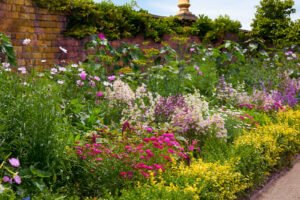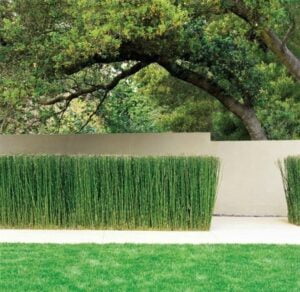We’re all trying to do the best for our plants, but when do we become more hindrance than help? We’ve looked at a few of the most common but obscure myths surrounding plant care in order to help you avoid unwittingly harming your garden. If you missed our last debunking of garden design myths, you can read it here.
Burying Banana Peels Amongst Roots of Roses
Roses need potassium to make chlorophyll, to in turn produce a greater yield of larger blooms. Needless to say, tossing in a potassium-rich banana peel when planting your new rose has always seemed sensible enough… However allowing a whole banana peel to decompose into the soil around your plants roots can have the opposite effect.
In order to break down the peels, nitrogen is drawn from the surrounding soil. Roses need nitrogen almost as much as they need potassium, dilemma! We suggest composting your banana peels before spreading a layer of the resulting mulch around your freshly planted rose.
Raindrops Will Magnify Sunlight And Burn Leaves
As many unsuspecting ants can attest to, the sun’s rays and a magnifying glass can spell game over. A not-inconsiderable assumption to make then, is that watering your plants in the heat of the day can produce the same effect on their leaves and stems. Water drops are the same as magnifying glasses…right? Leaf burn is real, but not from water.
Research has shown that it isn’t possible for raindrops to magnify the suns rays to a degree capable of burning the leaves beneath. They are simply too small. Theoretically plants with hairy leaves could hold the water droplets high enough to cause burning, but water rolls off them too quickly to cause any damage.
Coating Fresh Pruning Cuts In Tar To Prevent Disease
No gardener looks forward to pruning. The fear of killing plants is very real – before, during and after the act. To guard against blight and disease; many gardeners have taken to coating fresh pruning cuts in tar. Bad move.
Intending to seal the exposed area and prevent infection or moisture entering the cut, it turns out, actually hinders the plants natural healing process. Coating the wound in tar essentially traps moisture in, causing the shoot to rot. On this occasion the best thing you can do to help is simply limit the potential for infection, always using a clean, sharp blade.
Planting Holes: The Deeper, The Better
Seeking advice on how best to introduce a new shrub, the common rule is to plant in a hole twice the depth of the root ball. This is perhaps the worst thing you could do. When planting deep the roots are deprived of oxygen, leaving you with two potential outcomes – either the roots die, or they grow up towards the surface, tangling around the trunk on the way and causing even more problems.
In order to give your shrubs the best start, plant them a little deeper than the base of the roots and two or three times the width. This gives them room to spread out creating a stable base and allows them to absorb nutrients from a wider area.


